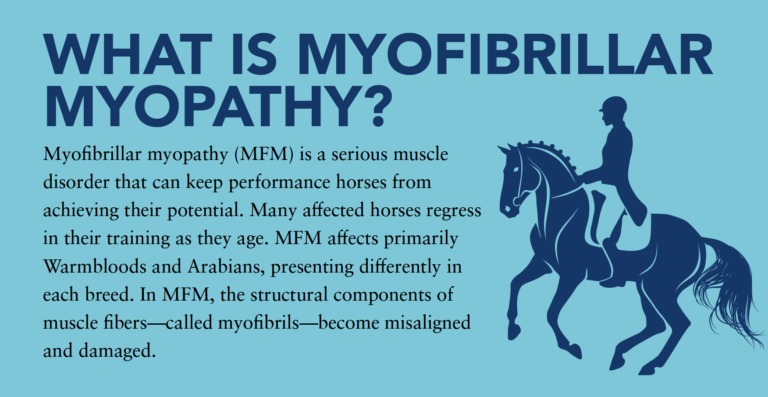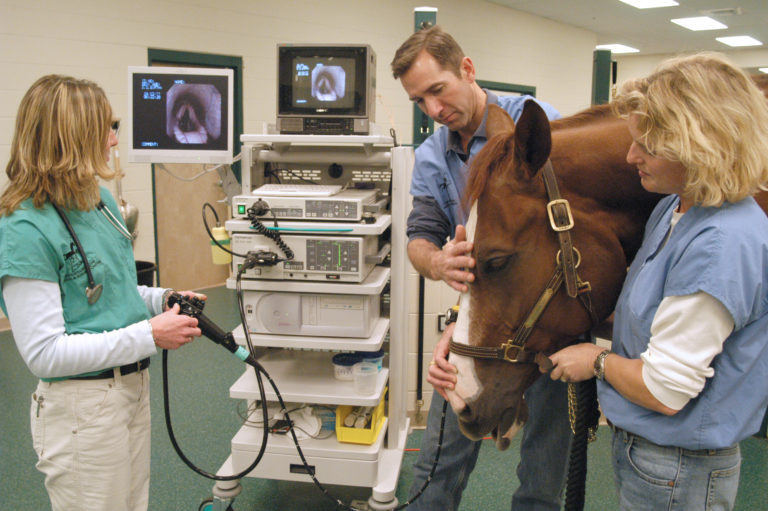A reader asks: How exactly should I shorten my reins to bring my horse’s head up out of a stretch without losing the contact or letting him pop his head up in the air?
Jaralyn Gibson, a grand prix dressage rider, has the answer:
Whenever I am confronted with training challenges dealing with keeping a good connection, I always recommend first making sure your horse’s bit and noseband are fitted correctly so there is no pinching between them. I see an awful lot of nosebands set too low, such that the horses’ cheeks get pinched whenever their riders apply pressure on the reins. In addition, be sure that your horse’s dental maintenance is up to date to avoid sharp teeth, which can also cause resistance.

Photo: Susan J. Stickle
If your horse’s tack and teeth are OK, then consider other reasons why you might be having difficulty going from a stretched to a working frame. There are two common causes for problems with this transition. First, you may need to improve your technique, not just for regathering the reins at the end of the stretch, but perhaps for initiating and executing the movement as well. The other common issue is that your horse may have an overall struggle with balance and/or acceptance of the bit, which makes the stretch exercise fundamentally difficult, and hence the transition up is messy. If you suspect you’re dealing with the second problem, find a trainer or clinician to help you address that before trying to tackle stretching exercises.
If your horse generally accepts the bit and travels in a relatively good balance for his level, review your stretching technique, starting from the beginning. Here are some simple steps to follow whether you’re performing a stretchy trot circle, a free walk or any other stretch:
Begin by checking that your horse is active in the hind legs and content with the contact. “Accepting the contact” means that you can keep a steady and elastic feel of his mouth, following the mechanics of the gait without interruption or tension, and your horse is amenable to the contact of the bit, not resisting, bracing, holding his mouth open, etc.
It is often best to train the stretch on a circle, as the bending line helps to keep your horse supple and active from the inside hind leg. Slightly loosen your fingers’ grip on the reins, allowing him to chew the bit and pull them a few inches through your hands. You can open your inside hand slightly away from the withers to help maintain flexion, but your outside hand should stay stable at the base of the horse’s neck. Meanwhile, use your inside leg as needed to keep the bend, energy and line of travel.
Most horses enjoy lengthening their neck and back muscles and will do so when given this opportunity. During the stretch, keep a feel of your horse’s mouth, even with the longer reins and outline of his body. There shouldn’t be a “loop” in your reins. Total loss of contact makes the transition back up very difficult because the change in contact is too abrupt. This will result in a lower score on this movement in a test because the criterion for the exercise calls for maintaining connection. Making your hands too wide is another common fault and usually occurs if you are trying to pull the horse into a stretch or you goofed and lengthened the reins too much too fast.
When the circle is done correctly to begin with, coming back up is pretty easy as long as you are aware of how to shorten your reins correctly in any situation, not just in this exercise. I remember being taught this technique in my first riding lesson: Put both reins in one hand and, keeping a feel of the horse’s mouth with that hand, slide your other hand forward up the rein to the desired length. Then repeat the process with the other rein to shorten it. This technique allows you to keep some contact on both reins at all times, thus causing the least disturbance to the horse’s connection to the bit. Done correctly, it keeps such “static” to a minimum.
Shuffling your fingers up the reins to shorten them is not a very effective technique because it creates more irregularity in the connection, which can result in unsteady head carriage or even some head flipping. With a horse that leans on the bit or takes a heavy contact, shuffling also fails because as you open your fingers to shorten the reins, your horse may pull on the reins enough to lengthen them. The end result is that the reins remain basically the same length.
In any exercise that requires bringing a horse back up into a shorter frame and contact, I often try to lengthen my arms as I am shortening the reins. This way, I achieve a shorter rein before my horse feels my request to shorten the frame. If I push my arms forward an inch or two as I shorten the reins, my horse doesn’t really notice the shorter reins until I slowly bring my arms back into a normal position. This way I can take several strides to gradually readjust his balance back into a working frame, rather than doing both at once. The most important goal is to try to stay with your horse’s mouth throughout the process, which means sometimes moving your hands forward a little—or back a little—depending on your horse on that day.
The goal with stretching exercises is to show that your horse is correctly ridden “from back to front” versus being held or restricted onto the bit. Some horses do this easily, but with others it takes time and patience to develop the balance and confidence required to achieve a good stretch. To increase your chance of performing this exercise successfully and confidently in the show ring, practice it frequently at home.
Grand Prix rider Jaralyn Gibson has taught and trained dressage riders and horses since 1993. She is a U.S. Dressage Federation gold, silver and bronze medalist, a gold bar recipient for musical freestyles, a graduate with distinction of the USDF “L” judge program and is currently awaiting the results of the U.S. Equestrian Federation ‘r’ judge license examination. She and her clients have qualified for and competed in numerous regional championships and national finals. Jaralyn continues to expand her classical education by working with top German trainer Conrad Schumacher, former USEF Young Dressage Horse Coach Scott Hassler and FEI three-star judge and competitor William Warren. Her training and sales business is based at Shepherds Run Farm in Loxahatchee, Florida, in the winter and Poolesville, Maryland, the rest of the year.
This article was originally published in the September 2018 issue of Practical Horseman.











